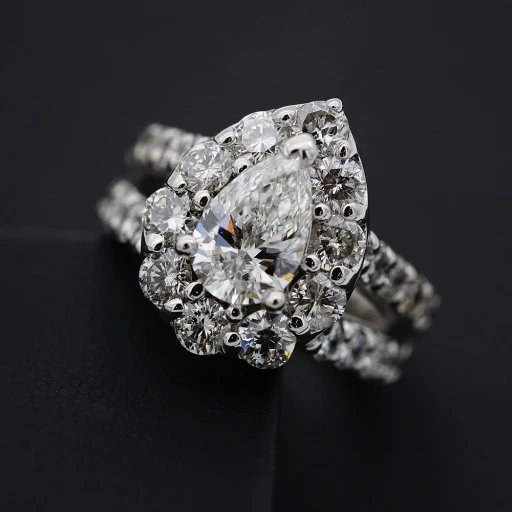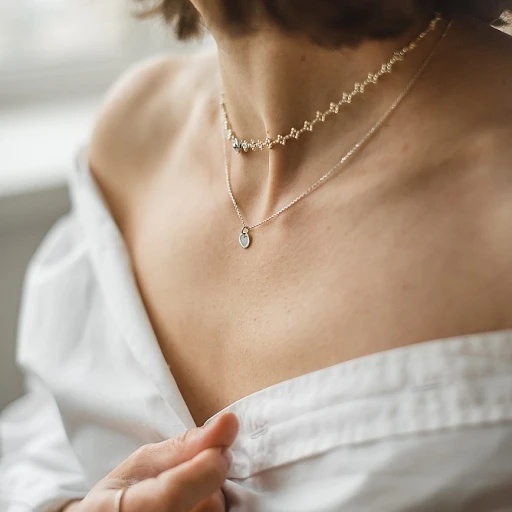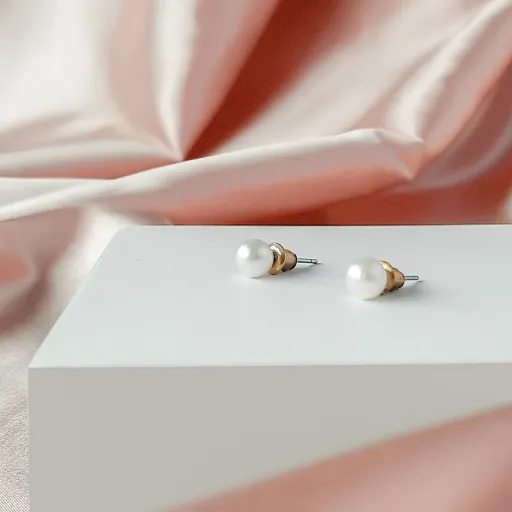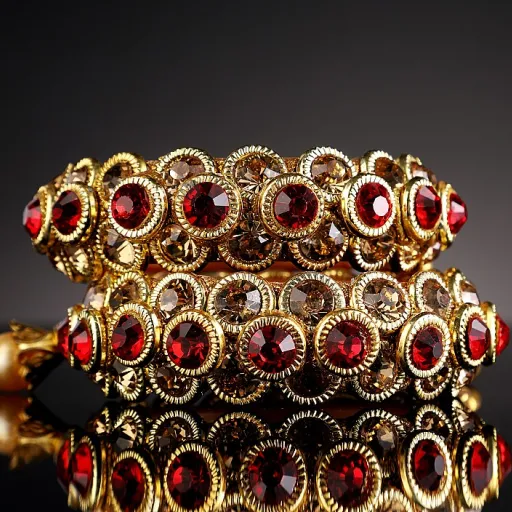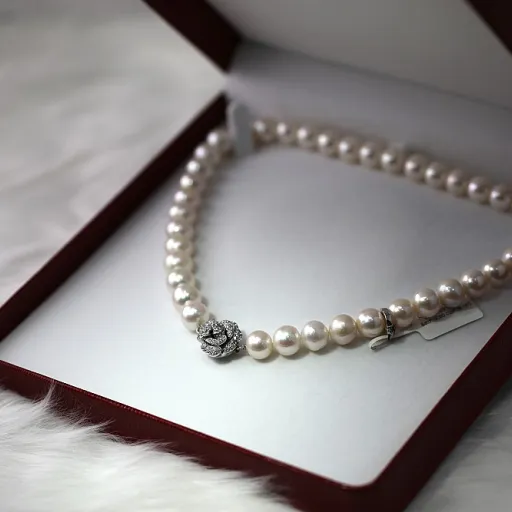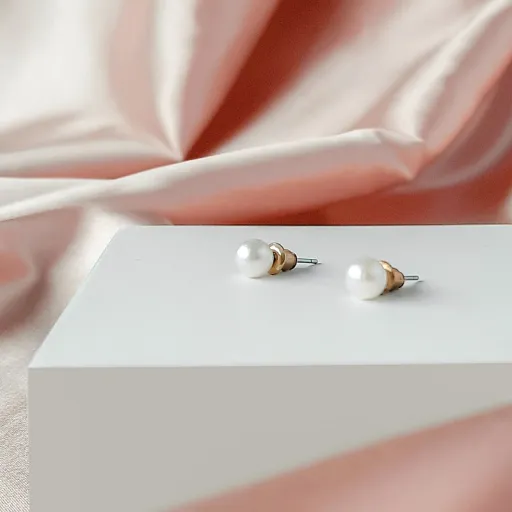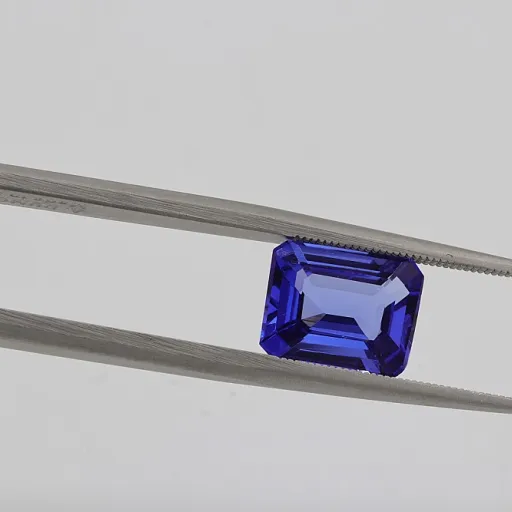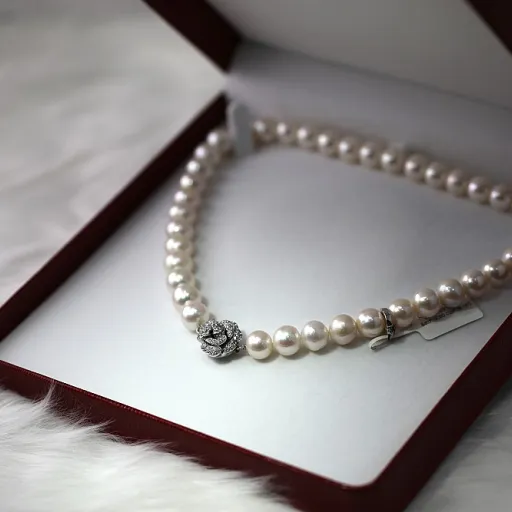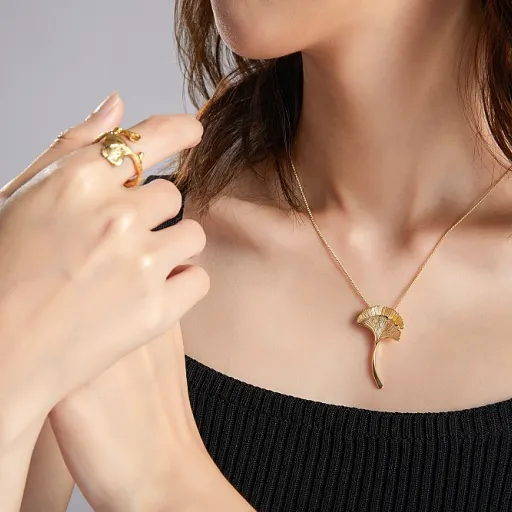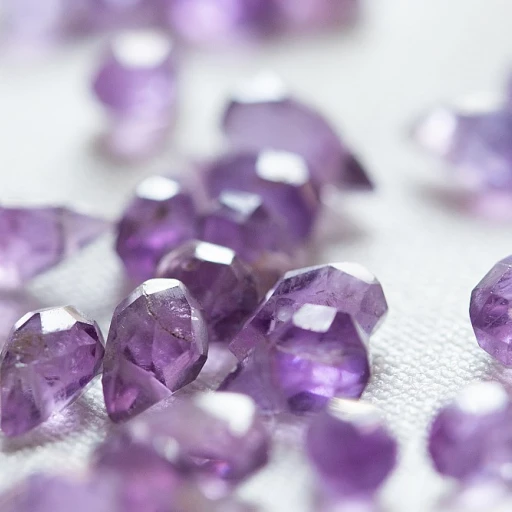
Understanding the rarity of blue gemstones
The fascination with natural blue hues
Blue gemstones have always held a special place in fine jewelry, captivating collectors and connoisseurs with their unique beauty and rarity. From the deep, velvety blue sapphire to the electric tones of paraiba tourmaline and the tranquil shades of swiss blue topaz, each gemstone offers a distinct allure. The rarity of these blue hues is not just about color, but also about the geological conditions required for their formation. For example, natural blue sapphire and tanzanite are found in very limited locations, making them highly sought after in the world of jewelry design.
What makes blue gemstones rare?
- Geological scarcity: Blue gemstones like kingman turquoise and blue zircon are only mined in specific regions, which limits their availability and impacts their price.
- Color intensity: The most valuable blue gemstones exhibit a pure, vivid color without gray or green overtones. This intensity is rare and directly influences the unit price and sale price of each piece.
- Crystal clarity: High-quality blue gemstones, whether set in yellow gold or sterling silver, are prized for their clarity. Inclusions can affect both beauty and price, making eye-clean stones especially desirable.
Comparing blue gemstones in fine jewelry
| Gemstone | Color Range | Rarity | Typical Setting |
|---|---|---|---|
| Blue Sapphire | Royal blue to cornflower | Very rare | Rings, earrings, yellow gold |
| Blue Topaz | Sky blue, swiss blue, London blue | More common | Stud earrings, dangle earrings, sterling silver |
| Tanzanite | Violet-blue | Extremely rare | Pendants, rings, white gold |
| Paraiba Tourmaline | Neon blue-green | Exceptionally rare | High jewelry, custom design |
| Kingman Turquoise | Sky blue | Rare | Silver, sterling silver, statement jewelry |
Understanding the rarity of blue gemstones is essential for fine jewelry owners who want to make informed decisions about their collections. The interplay of color, clarity, and origin not only affects the regular price and sale price but also the long-term value of each piece. For those interested in the deeper story behind blue sapphire, the allure and significance of blue sapphire royal blue in fine jewelry offers further insights into this iconic gemstone.
Evaluating quality in blue gem jewelry
Key Factors That Define Blue Gemstone Quality
For fine jewelry owners, understanding what makes blue gemstones truly exceptional is essential. The value and beauty of blue gem jewelry depend on several interconnected factors. Whether you are considering a blue sapphire ring, a pair of dangle earrings with blue topaz, or a turquoise pendant set in sterling silver, these criteria will help you evaluate quality with confidence.
- Color and Hue: The most prized blue gemstones display vivid, saturated color. Blue sapphires, for example, are valued for their deep royal blue, while blue topaz and blue zircon are admired for their bright, clear blue hues. Natural blue shades, such as those found in kingman turquoise or paraiba tourmaline, are especially sought after. Subtle differences in tone and saturation can significantly impact the price and desirability of a gemstone.
- Clarity: Inclusions are common in many gemstones, but the fewer visible flaws, the higher the value. For blue gemstones like tanzanite and sapphire, clarity is a key quality marker. However, some stones, such as turquoise, are appreciated for their unique matrix patterns, which can enhance their character and appeal.
- Cut and Shape: The cut of a gemstone affects how it interacts with light, revealing its brilliance and depth. Well-cut blue gemstones maximize sparkle and color, whether set in stud earrings, a ring, or a pendant. Popular shapes include oval, cushion, and round cuts, each offering a different visual impact.
- Carat Weight: Larger blue gemstones are rare and command higher prices. However, the unit price or price per carat can vary greatly depending on the stone's overall quality. For example, a small but intensely colored blue sapphire may be more valuable than a larger, paler stone.
- Setting and Metal: The choice of metal—sterling silver, yellow gold, or platinum—can influence the gemstone's appearance and the overall design of the jewelry. Sterling silver settings often enhance the cool tones of blue gemstones, while yellow gold creates a striking contrast, especially with stones like swiss blue topaz or blue zircon.
Comparing Blue Gemstones in Fine Jewelry
| Gemstone | Signature Color | Common Settings | Price Range* |
|---|---|---|---|
| Blue Sapphire | Deep royal blue | Rings, earrings, necklaces | High |
| Blue Topaz | Sky blue, swiss blue | Stud earrings, pendants | Moderate |
| Tanzanite | Violet-blue | Rings, dangle earrings | High |
| Turquoise | Natural blue-green | Pendants, bracelets | Moderate |
| Blue Zircon | Bright blue | Rings, earrings | Moderate |
| Paraiba Tourmaline | Neon blue-green | High-end rings, pendants | Very High |
*Price ranges are indicative and depend on quality, carat, and market trends.
When evaluating blue gem jewelry, always consider the interplay between color, clarity, cut, and carat. The setting and overall design also play a crucial role in showcasing the gemstone's natural beauty. For a deeper dive into the nuances of blue sapphire quality and its unique appeal, explore this guide to Montana sapphire necklaces.
Sourcing ethical and authentic blue gemstones
Ethical Sourcing and Authenticity in Blue Gemstone Jewelry
For fine jewelry owners, ensuring the ethical origin and authenticity of blue gemstones is a crucial part of the acquisition process. The demand for blue hues—whether in sapphire, tanzanite, turquoise, or blue topaz—has led to increased scrutiny of sourcing practices and transparency in the supply chain. Buyers are more aware than ever of the environmental and social impact of gemstone mining, making responsible sourcing a priority for both new purchases and existing collections.
- Traceability: Reputable jewelers provide documentation or certification for blue gemstones, such as blue sapphire or paraiba tourmaline, detailing their origin and confirming they are natural blue stones rather than synthetic or treated alternatives.
- Ethical Mining: Look for suppliers who adhere to fair labor practices and support environmentally responsible mining. This is especially important for stones like tanzanite and kingman turquoise, where mining regions are limited and vulnerable.
- Material Integrity: The choice of metal—sterling silver, yellow gold, or platinum—should also be ethically sourced. Sterling silver and yellow gold settings can enhance the beauty of blue gemstones, but their provenance matters for those committed to responsible luxury.
Authenticity impacts both the price and long-term value of blue gemstone jewelry. Natural blue gemstones command a higher unit price and regular price compared to treated or lab-created stones. For example, a blue sapphire ring set in sterling silver will have a different price sale and unit price than a similar design with a synthetic stone. Always request a gemstone certificate from a recognized authority to verify authenticity and quality.
When considering turquoise, especially varieties like kingman turquoise, be aware of the prevalence of imitations. Genuine turquoise, whether in stud earrings or dangle earrings, should have clear documentation. For more on the unique appeal and sourcing of turquoise, explore this in-depth guide to turquoise earrings.
Ultimately, sourcing ethical and authentic blue gemstones is not just about the immediate sale price or investment value. It is about preserving the integrity and beauty of your jewelry collection for generations to come, while supporting responsible practices in the industry.
Preserving the brilliance of blue gem jewelry
Daily Care for Lasting Blue Brilliance
Blue gemstones like sapphire, tanzanite, turquoise, and blue topaz are prized for their vibrant color and unique beauty. To maintain their allure, regular care is essential. Fine jewelry owners should avoid exposing blue gemstones to harsh chemicals, extreme temperatures, or direct sunlight for prolonged periods. Even natural blue stones such as kingman turquoise and paraiba tourmaline can lose their luster if not handled with care.
- Remove rings and earrings before engaging in activities that might scratch or chip the gemstone.
- Store blue gemstone jewelry separately, ideally in soft pouches or lined boxes, to prevent contact with harder stones like diamond.
- Clean pieces gently using lukewarm water, mild soap, and a soft brush. Avoid ultrasonic cleaners for porous stones like turquoise.
Protecting Metal Settings and Enhancing Longevity
The metal setting—whether yellow gold, sterling silver, or platinum—also affects the preservation of blue gemstone jewelry. Sterling silver, for example, can tarnish over time, which may dull the overall appearance of the piece. Regular polishing with a silver cloth helps maintain its shine. For yellow gold settings, periodic professional cleaning ensures both the metal and the gemstone remain in top condition.
Professional Maintenance and Value Retention
Scheduling professional inspections is a wise investment, especially for high-value pieces featuring blue sapphire, blue zircon, or sapphire tanzanite. Jewelers can check for loose prongs, worn settings, and other issues that could compromise the security of the gemstone. This is particularly important for intricate designs, such as dangle earrings or custom rings, where the unit price and sale price can be significant. Regular maintenance not only preserves the beauty but also supports the resale value and market appeal of your jewelry.
Tips for Specific Blue Gemstones
| Gemstone | Care Recommendation |
|---|---|
| Blue Sapphire | Safe for most cleaning methods, but avoid harsh chemicals. |
| Blue Topaz | Protect from hard knocks and avoid sudden temperature changes. |
| Turquoise | Keep away from water, oils, and perfumes; store in a dry place. |
| Tanzanite | Clean with mild soap and water; avoid ultrasonic cleaners. |
| Swiss Blue Topaz | Store separately to avoid scratches; clean gently. |
By following these care practices, fine jewelry owners can ensure their blue gemstone pieces—whether stud earrings, rings, or statement necklaces—retain their color, brilliance, and value for generations.
Navigating market trends and investment value
Shifting Tides in Blue Gemstone Demand
The market for blue gemstones is dynamic, shaped by both global trends and the enduring appeal of classic stones. Blue sapphire remains a benchmark for luxury, but other gems like tanzanite, blue topaz, paraiba tourmaline, and blue zircon are gaining traction among collectors and investors. The rise of unique blue hues—such as the vibrant tones of kingman turquoise or the electric swiss blue topaz—reflects a growing appreciation for diversity in color and design.
Price Factors and Investment Considerations
For fine jewelry owners, understanding price structures is crucial. The unit price of blue gemstones depends on rarity, color saturation, clarity, and origin. For example, natural blue sapphire and paraiba tourmaline command higher prices due to their scarcity and intense color. In contrast, blue topaz and turquoise, while beautiful, are more accessible in terms of regular price and sale price. Sterling silver and yellow gold settings also influence the final price, with yellow gold often elevating the perceived value of blue gemstone jewelry.
- Blue sapphire: Premium price, especially for royal blue shades
- Tanzanite: Increasingly rare, with prices rising steadily
- Blue topaz: Affordable, especially in sterling silver or silver settings
- Kingman turquoise: Sought after for its unique matrix and color
- Blue zircon: Appreciated for brilliance, moderate price point
Market Trends in Design and Sale
Design trends influence both desirability and investment value. Stud earrings and dangle earrings featuring blue gemstones are popular for their versatility. Rings with a single blue gemstone, especially in yellow gold, are classic investment pieces. Jewelry that pairs blue gems with diamonds or other colored stones often sees higher demand and price blue premiums.
Regular price and sale price fluctuations are common, especially during seasonal sales or when new gemstone sources are discovered. Monitoring these trends helps owners make informed decisions about when to buy or sell.
Balancing Beauty and Value
Ultimately, the value of blue gemstone jewelry lies in its combination of beauty, rarity, and craftsmanship. Whether choosing a sapphire tanzanite ring, a pair of blue topaz stud earrings, or a turquoise pendant in sterling silver, owners should weigh both aesthetic appeal and market trends. Staying informed about the evolving landscape ensures your collection remains both beautiful and valuable.
Custom design considerations for blue gem jewelry
Personalizing Blue Gemstone Jewelry: From Vision to Reality
Custom design is where the true individuality of blue gemstone jewelry shines. Whether you are drawn to the deep allure of blue sapphire, the vibrant tones of swiss blue topaz, or the unique character of kingman turquoise, the design process allows you to express your personal style and values. Here are some key considerations for fine jewelry owners looking to create a bespoke piece:- Choice of Gemstone: Selecting the right blue gemstone is foundational. Each stone—be it tanzanite, blue zircon, or paraiba tourmaline—offers distinct blue hues, clarity, and rarity. Consider the gemstone’s origin, natural blue intensity, and whether you prefer a classic blue sapphire or a more contemporary blue topaz or turquoise.
- Setting and Metal: The metal you choose impacts both the beauty and durability of your jewelry. Sterling silver and yellow gold are popular choices for blue gemstones. Sterling silver enhances the cool tones of blue, while yellow gold provides a striking contrast, especially with blue sapphire or blue zircon.
- Design Elements: Decide on the style—do you want a timeless ring, elegant stud earrings, or dramatic dangle earrings? The design should complement the gemstone’s color and cut. For example, a solitaire blue sapphire ring in yellow gold exudes classic elegance, while a pair of blue topaz dangle earrings in sterling silver offers a modern touch.
- Budget and Pricing: Custom pieces vary widely in price. Factors include the gemstone’s rarity, carat weight, and the complexity of the design. Always compare the regular price and sale price, and ask for a breakdown of unit price and price per gemstone. This transparency helps you understand the true value of your investment.
- Ethical Sourcing: As discussed earlier, ensure your chosen gemstones are ethically sourced and authentic. This not only adds to the piece’s value but also aligns with responsible luxury.
| Gemstone | Color | Popular Setting | Typical Price Range |
|---|---|---|---|
| Blue Sapphire | Deep blue | Yellow gold ring | High |
| Blue Topaz | Swiss blue, sky blue | Sterling silver earrings | Moderate |
| Kingman Turquoise | Natural blue | Silver pendant | Moderate |
| Tanzanite | Violet-blue | White gold ring | High |
| Blue Zircon | Bright blue | Stud earrings | Moderate |
| Paraiba Tourmaline | Neon blue-green | Platinum ring | Very high |

